 
Heil Front Loader
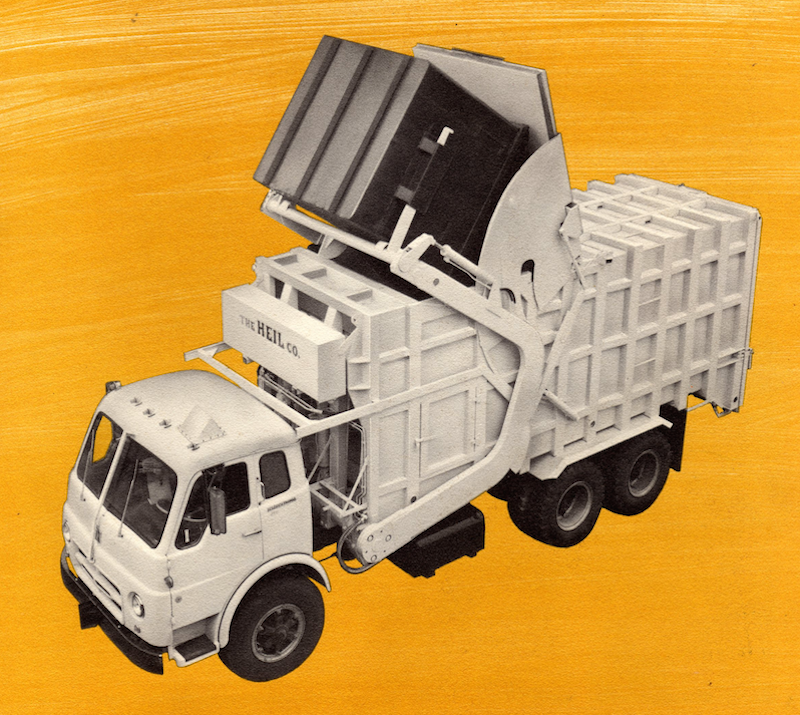
In 1969, Heil made a crucial addition to their refuse truck lineup in the form of a front loader packer body. This was a full-pack unit with a telescopic cylinder and a heavily reinforced body. It was competitive with Dempster, E-Z Pack, Lodal, Pak-Mor and Cobey, but with body weights in the neighborhood of 14-15,000 pounds, Heil was actually on the lighter end of that scale. Initial body sizes were 24 and 30 cubic yards, with a flat tailgate panel. Over-the cab lift arms were utilized, powered by vertical cylinders stacked inside the front of the body and acting against crank arms welded to the torque tube. Self-leveling forks and 6,000 pound lift capacity came standard. The single telescopic cylinder which operated the packer was also vertical, with the forward end mounted to the body top crossmember, and the lower end to the base of the blade.
Minor changes were made in the early 1970s, most importantly in the addition of a pair of optional bustle-type tailgates, adding either 3 or 6-cubic yards body capacity. The horizontal braces along the rear of the body were also eliminated during this period. By 1980, the front loader was renamed the Formula 8000 to coincide with Heil's new model nomenclature, all of which were equipped with the bustle tailgate. Lift arm capacity was increased to 8,000 pounds. The original Heil front loader was simple and durable, a fairly typical eastern-type unit of its time which gave the company a foothold in the front loader market for the 1970s. After a long run, it was modernized in the mid-1980s when a new generation of Heil front loaders was unveiled, and eventually retired in favor of more modern designs.
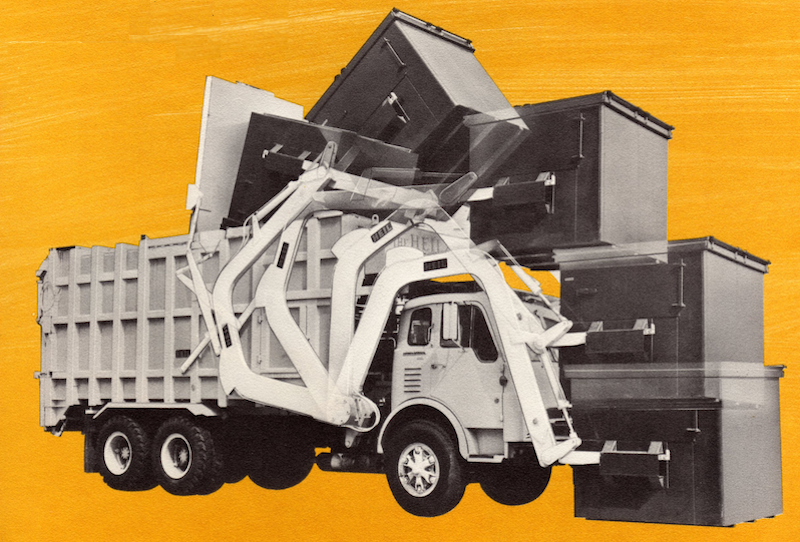
Heil front loader had self-leveling forks, controlled by hydraulic slave cylinders
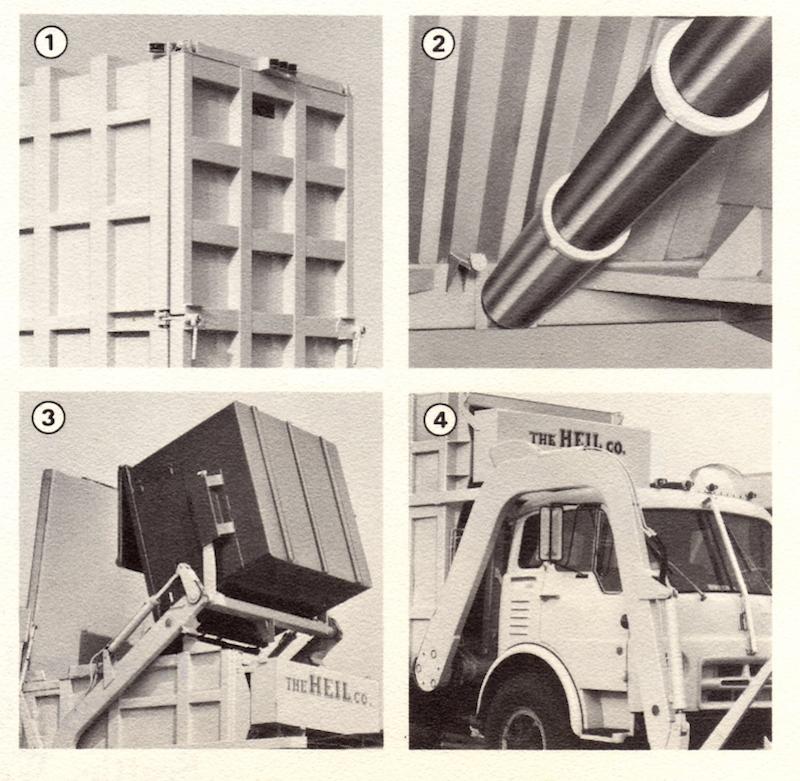
(1) Manual flat tailgate was standard, hydraulic power lift was optional
(2) A massive 8-3/4 inch diameter telescopic cylinder operated the packer panel
(3) Optional power-operated hopper closure door
(4) Arm lift cylinders were stacked vertically inside body
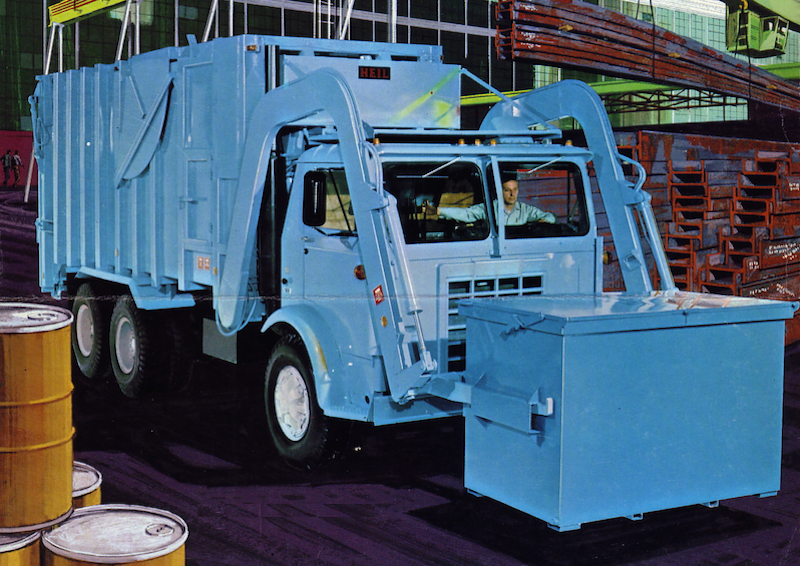
For 1973, a vertically ribbed body replaced the original cross-rib design
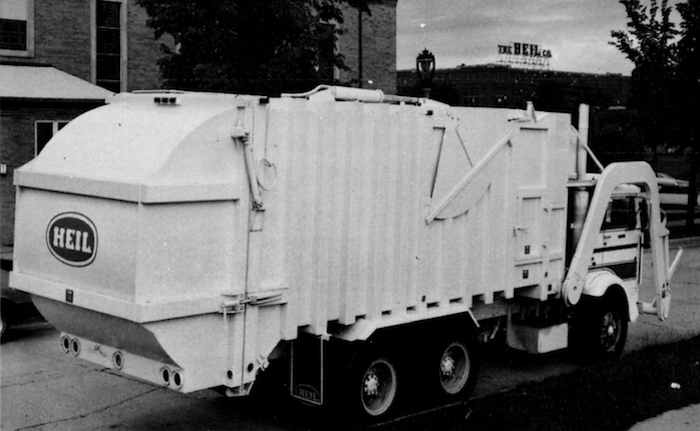
Also new for '73 was a bustle tailgate assembly in 3 or 6-yard capacity
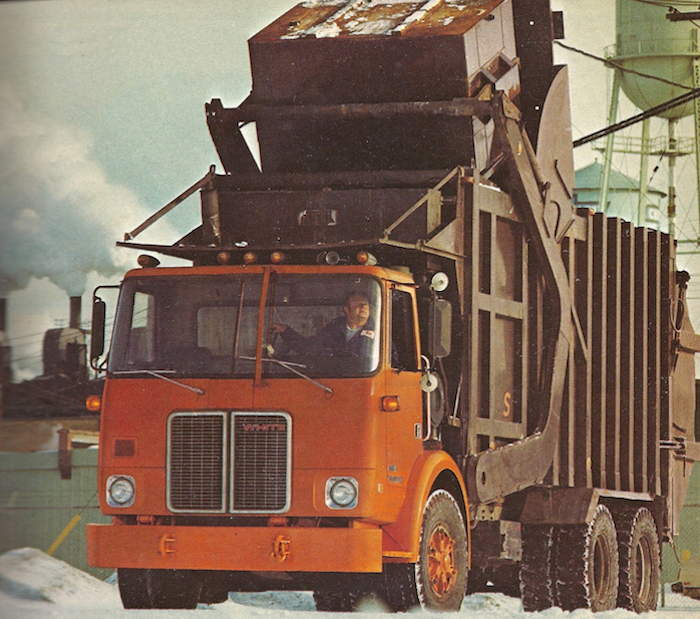
1970s Heil front loader on White Road Xpeditor II chassis
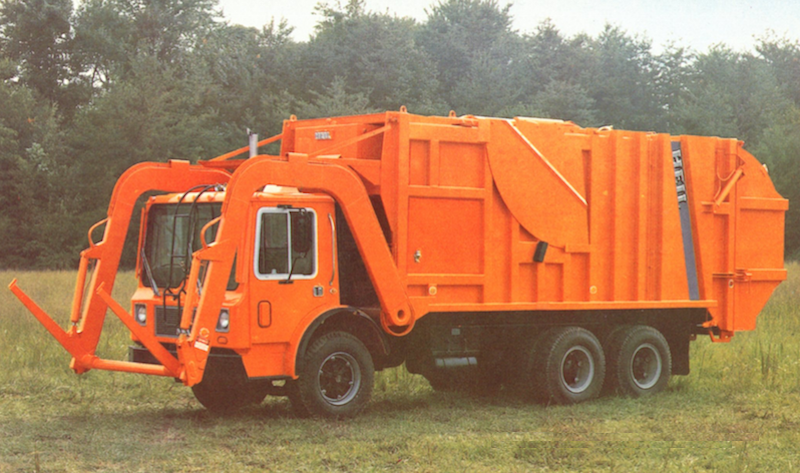
In late 1979, the original front loader was renamed the Formula 8000
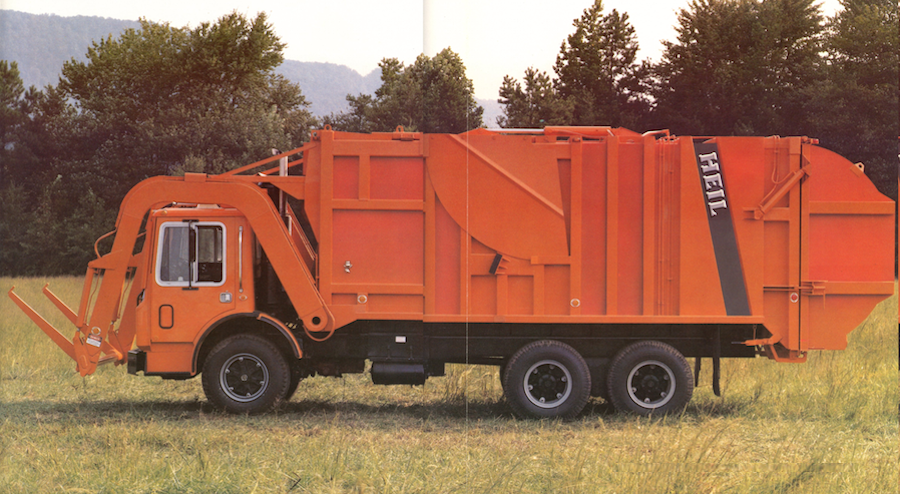
This 36-yard Formula 8000 sits atop a Mack MR cabover, one of the most popular chassis for front loaders
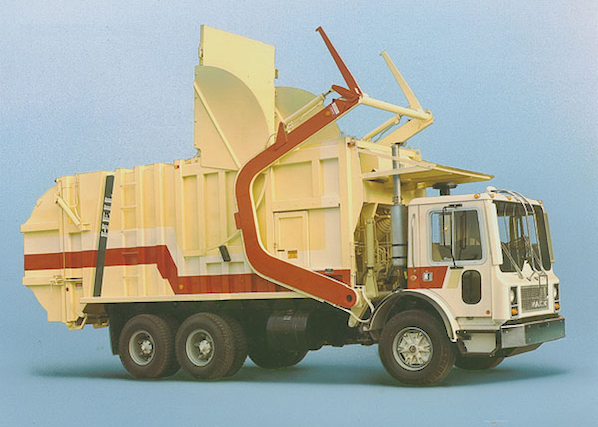
In 1982, special option packages were offered, and Heil kept a pool of Mack MR chassis for immediate delivery
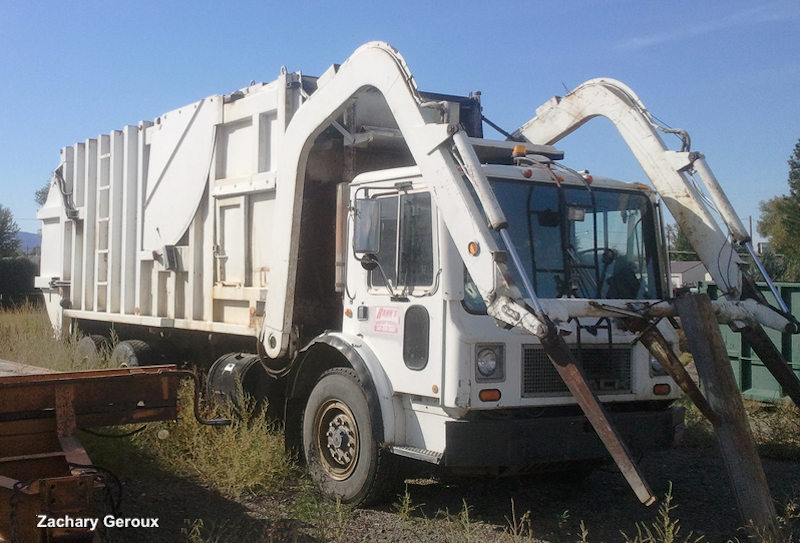
A retired Heil Formula 8000 rests in the grass
SIDEBAR: THE STILLBORN HEIL FRONT LOADER OF 1957
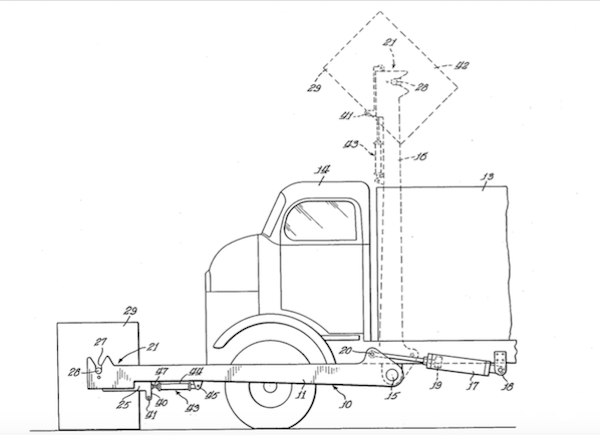
In 1961, Heil Company was granted a U.S. Patent for a front loader arm using an automatic-locking pintle and hook system to secure the container. Designers Llewellyn Sexton and Edward Waltz filed the patent in early 1957, and since both men listed Kalamazoo, Michigan as their residence, it is highly likely that this patent was originally created for Load-Lugger, which was owned at that time by Borg-Warner and located in Kalamazoo. When Heil acquired Load-Lugger from BW in 1961, any pending patents (such as this one) would have conveyed. Given the state of front-loader technology in the early 1960s, it is easy to see why Heil decide to shelve this design. Side and bottom-fork container coupling was already dominant within the industry, and Dempster had the patent locked-up for the over-the-cab (OPC) type lift arm. Eventually Dempster's patent would be successfully challenged in court, paving the way for many new entries in the front loader field. By waiting a few short years, Heil was able to field a more competitive design in 1969, compatible with most existing containers already in service.
REFERENCES
U.S. Patent no. 3012684, Llewellyn F. Sexton, Jr. and Edward S. Waltz, February 25, 1957 (Heil Co.)
|



5/29/17
© 2017
All Rights Reserved
Photos from factory brochures/advertisements except as noted
Logos shown are the trademarks of respective manufacturers
|
| |